-
 Bitcoin
Bitcoin $106,754.6083
1.33% -
 Ethereum
Ethereum $2,625.8249
3.80% -
 Tether USDt
Tether USDt $1.0001
-0.03% -
 XRP
XRP $2.1891
1.67% -
 BNB
BNB $654.5220
0.66% -
 Solana
Solana $156.9428
7.28% -
 USDC
USDC $0.9998
0.00% -
 Dogecoin
Dogecoin $0.1780
1.14% -
 TRON
TRON $0.2706
-0.16% -
 Cardano
Cardano $0.6470
2.77% -
 Hyperliquid
Hyperliquid $44.6467
10.24% -
 Sui
Sui $3.1128
3.86% -
 Bitcoin Cash
Bitcoin Cash $455.7646
3.00% -
 Chainlink
Chainlink $13.6858
4.08% -
 UNUS SED LEO
UNUS SED LEO $9.2682
0.21% -
 Avalanche
Avalanche $19.7433
3.79% -
 Stellar
Stellar $0.2616
1.64% -
 Toncoin
Toncoin $3.0222
2.19% -
 Shiba Inu
Shiba Inu $0.0...01220
1.49% -
 Hedera
Hedera $0.1580
2.75% -
 Litecoin
Litecoin $87.4964
2.29% -
 Polkadot
Polkadot $3.8958
3.05% -
 Ethena USDe
Ethena USDe $1.0000
-0.04% -
 Monero
Monero $317.2263
0.26% -
 Bitget Token
Bitget Token $4.5985
1.68% -
 Dai
Dai $0.9999
0.00% -
 Pepe
Pepe $0.0...01140
2.44% -
 Uniswap
Uniswap $7.6065
5.29% -
 Pi
Pi $0.6042
-2.00% -
 Aave
Aave $289.6343
6.02%
Will the market necessarily pull back after the PSY psychological line exceeds 75%?
The PSY psychological line above 75% signals overbought conditions but doesn't guarantee a market pullback, especially in strong crypto trends driven by fundamentals or FOMO.
Jun 17, 2025 at 03:01 am
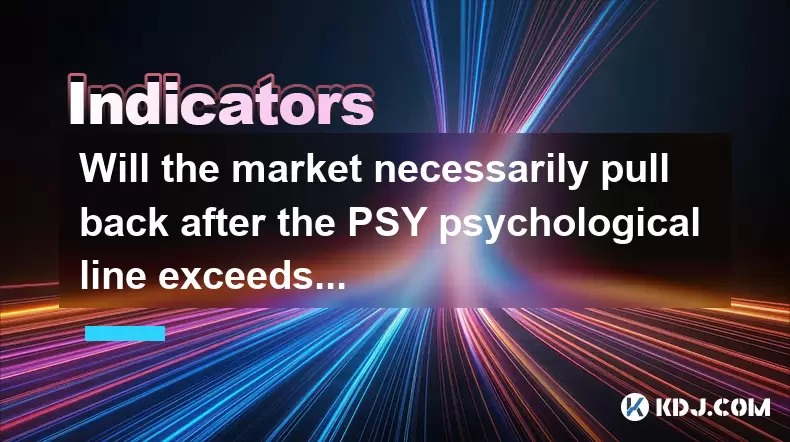
Understanding the PSY Psychological Line Indicator
The PSY psychological line indicator is a popular technical analysis tool used in financial markets, including the cryptocurrency market. It measures the sentiment of traders by analyzing the number of days the price has risen over a specific period. The formula for calculating the PSY value is:
PSY = (Number of Rising Days / Total Period) × 100%
A commonly referenced threshold is 75%, which many traders interpret as an overbought condition. When the PSY psychological line exceeds 75%, it suggests that the market may be experiencing excessive optimism or bullish sentiment.
However, this does not necessarily guarantee a market pullback. While high PSY values can signal potential reversals, they do not confirm them. In volatile markets like cryptocurrencies, momentum can persist even when indicators suggest otherwise.
Historical Behavior of Cryptocurrency Markets at High PSY Levels
In historical data from major cryptocurrencies such as Bitcoin and Ethereum, there are instances where the PSY psychological line exceeded 75% without an immediate correction. For example:
- During the bull run of late 2020 to early 2021, Bitcoin's PSY indicator remained above 75% for several weeks before any meaningful pullback occurred.
- Similarly, altcoins like Ethereum and Binance Coin also showed extended periods of elevated PSY levels during strong uptrends.
These observations indicate that while a high PSY psychological line may reflect overbought conditions, it should not be used in isolation to predict market pullbacks. Other factors such as volume, macroeconomic news, and broader market sentiment must be considered.
Why the Market May Not Pull Back Immediately After PSY Exceeds 75%
There are several reasons why the market might continue rising despite a PSY psychological line above 75%:
- Strong Fundamental Drivers: If there are positive developments such as institutional adoption, regulatory clarity, or technological upgrades, the market can sustain bullish momentum.
- Whale Accumulation: Large holders may continue buying during perceived overbought conditions, supporting price action.
- Market Narratives: Positive narratives around DeFi, NFTs, or Web3 can drive sustained investor interest regardless of short-term technical signals.
- FOMO (Fear of Missing Out): Retail investors often enter the market aggressively when prices are already high, pushing the trend further.
Therefore, relying solely on the PSY psychological line can lead to premature exits or missed opportunities in trending markets.
Combining PSY with Other Technical Indicators
To enhance the predictive power of the PSY psychological line, traders often combine it with other tools:
- Moving Averages: Using the 50-day and 200-day moving averages can help identify long-term trends.
- RSI (Relative Strength Index): Another momentum oscillator that complements the PSY by measuring price strength.
- Volume Analysis: Increasing volume during overbought conditions may suggest continued buying pressure.
- MACD (Moving Average Convergence Divergence): Helps confirm trend direction and potential reversals.
For instance, if the PSY psychological line is above 75% and the RSI is also in overbought territory (above 70), but the MACD line remains above the signal line and volume is increasing, it could imply that the uptrend still has legs.
Practical Steps for Monitoring PSY and Market Conditions
Here’s how traders can effectively monitor the PSY psychological line and assess whether a pullback is likely:
- Choose a Suitable Timeframe: Most traders use a 12-day or 14-day period for calculating PSY. Shorter timeframes make the indicator more sensitive, while longer ones smooth out noise.
- Overlay PSY with Price Chart: Use platforms like TradingView or Binance's native tools to plot the PSY alongside the price chart.
- Watch for Divergences: If the price makes a new high but the PSY fails to reach a new peak, it may signal weakening momentum.
- Compare with Historical Data: Look at previous cycles to see how the market reacted when PSY crossed 75%.
- Set Alerts: Configure alerts on trading platforms when PSY crosses key thresholds like 75% or drops below 25%.
These steps help traders avoid false signals and make more informed decisions based on confluence rather than isolated readings.
Frequently Asked Questions
Q1: Can the PSY psychological line ever be too high to matter?
Yes, in strong bull markets, the PSY psychological line can remain elevated for extended periods. High values don’t always mean an imminent reversal; they just reflect persistent bullish sentiment.
Q2: What other indicators work well with PSY in crypto trading?
Traders often pair PSY psychological line with RSI, MACD, and moving averages to confirm signals and filter out noise. Volume indicators are also useful for validating momentum.
Q3: Is PSY more effective in certain cryptocurrencies?
The effectiveness of the PSY psychological line depends on liquidity and trading volume. It tends to be more reliable in large-cap assets like Bitcoin and Ethereum compared to low-volume altcoins.
Q4: How often should I check the PSY psychological line?
Daily checks are sufficient for most traders. However, active day traders might refer to shorter timeframes (e.g., 4-hour charts) and update their assessments accordingly.
Disclaimer:info@kdj.com
The information provided is not trading advice. kdj.com does not assume any responsibility for any investments made based on the information provided in this article. Cryptocurrencies are highly volatile and it is highly recommended that you invest with caution after thorough research!
If you believe that the content used on this website infringes your copyright, please contact us immediately (info@kdj.com) and we will delete it promptly.
- 2025-W Uncirculated American Gold Eagle and Dr. Vera Rubin Quarter Mark New Products
- 2025-06-13 06:25:13
- Ruvi AI (RVU) Leverages Blockchain and Artificial Intelligence to Disrupt Marketing, Entertainment, and Finance
- 2025-06-13 07:05:12
- H100 Group AB Raises 101 Million SEK (Approximately $10.6 Million) to Bolster Bitcoin Reserves
- 2025-06-13 06:25:13
- Galaxy Digital CEO Mike Novogratz Says Bitcoin Will Replace Gold and Go to $1,000,000
- 2025-06-13 06:45:13
- Trust Wallet Token (TWT) Price Drops 5.7% as RWA Integration Plans Ignite Excitement
- 2025-06-13 06:45:13
- Ethereum (ETH) Is in the Second Phase of a Three-Stage Market Cycle
- 2025-06-13 07:25:13
Related knowledge
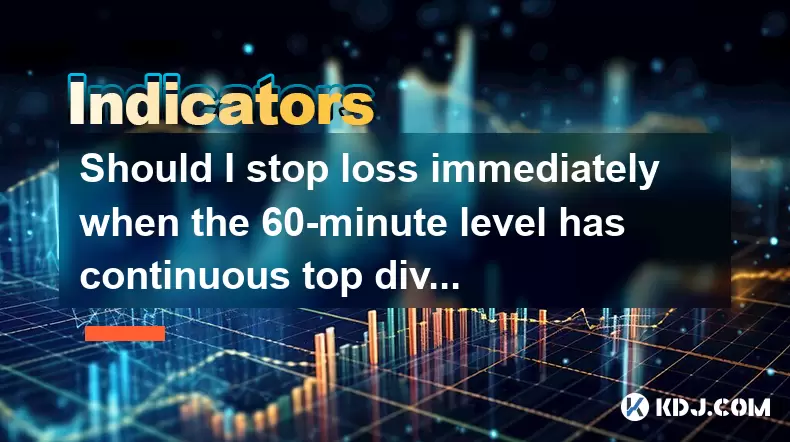
Should I stop loss immediately when the 60-minute level has continuous top divergence?
Jun 17,2025 at 05:28pm
Understanding Top Divergence in the 60-Minute ChartIn cryptocurrency trading, top divergence refers to a technical signal where the price of an asset makes higher highs while the indicator (often RSI or MACD) makes lower lows. This is commonly interpreted as a sign of weakening momentum and potential reversal. When this occurs on the 60-minute chart, it...
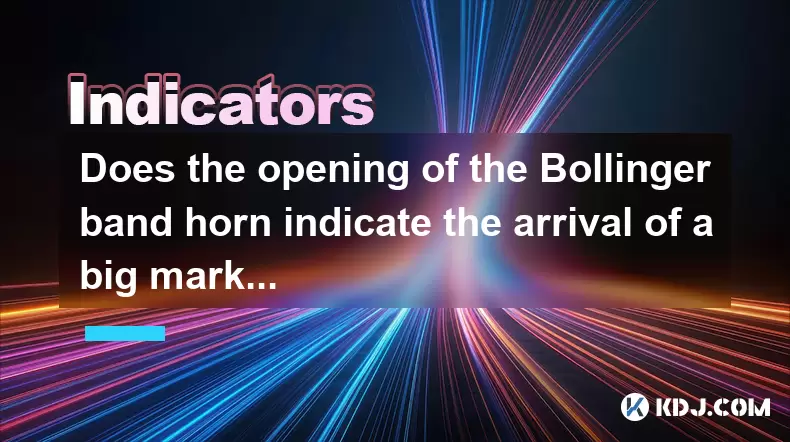
Does the opening of the Bollinger band horn indicate the arrival of a big market?
Jun 17,2025 at 06:28pm
Understanding the Bollinger Bands and Their StructureBollinger Bands are a widely used technical analysis tool in the cryptocurrency market, developed by John Bollinger. They consist of three lines: a simple moving average (SMA), typically set at 20 periods, and two standard deviation bands above and below this SMA. These bands dynamically expand and co...
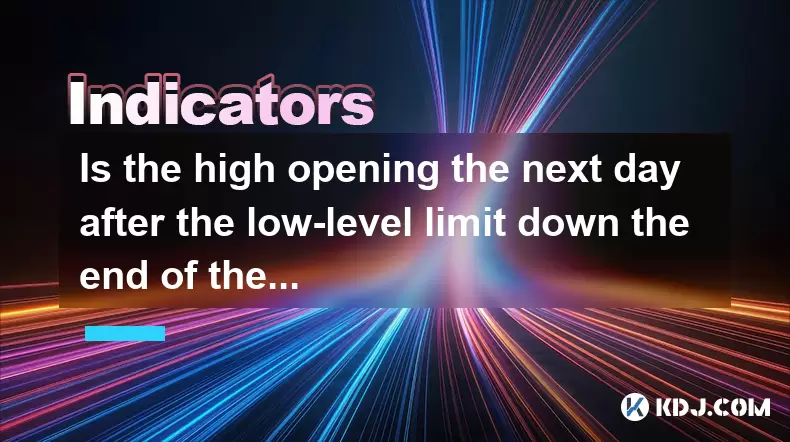
Is the high opening the next day after the low-level limit down the end of the wash?
Jun 17,2025 at 05:57pm
Understanding the Concept of a Limit Down and Its ImplicationsIn the world of cryptocurrency trading, a limit down refers to a situation where the price of a digital asset drops sharply, reaching its maximum allowable decline within a specific time frame. This mechanism is often seen on exchanges that implement daily price limits to prevent excessive vo...
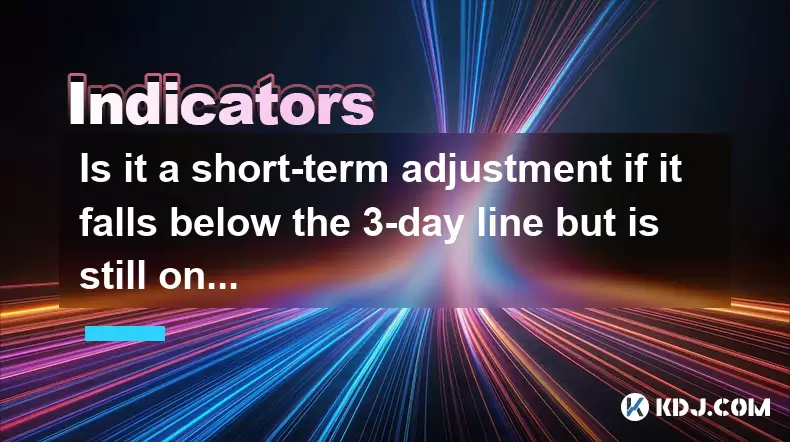
Is it a short-term adjustment if it falls below the 3-day line but is still on the 10-day line?
Jun 17,2025 at 04:07pm
Understanding the 3-Day and 10-Day Moving AveragesIn cryptocurrency trading, moving averages are essential tools for gauging trend strength and potential reversals. The 3-day moving average is a short-term indicator that reflects recent price action with minimal lag, making it highly sensitive to sudden market shifts. In contrast, the 10-day moving aver...
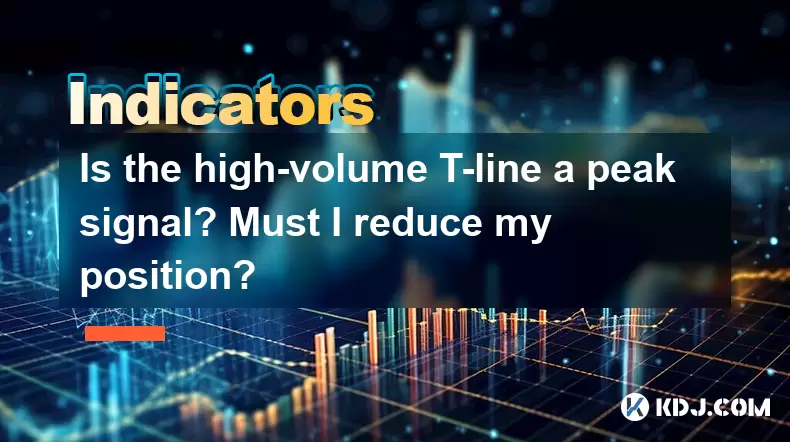
Is the high-volume T-line a peak signal? Must I reduce my position?
Jun 17,2025 at 06:07pm
Understanding the T-Line Pattern in Cryptocurrency TradingIn cryptocurrency trading, technical patterns are frequently used by traders to anticipate price movements. One such pattern is the T-line, which appears on candlestick charts and is characterized by a long upper or lower shadow with little or no body. A high-volume T-line occurs when this patter...
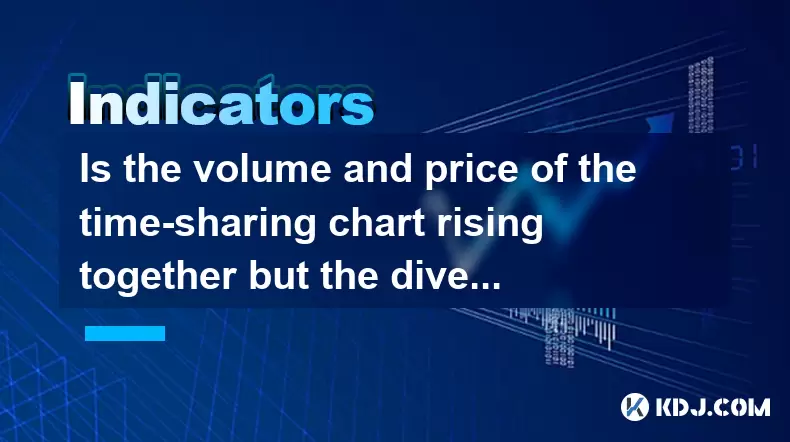
Is the volume and price of the time-sharing chart rising together but the dive at the end of the trading day a lure to buy more? Should I run?
Jun 17,2025 at 07:28pm
Understanding the Time-Sharing Chart DynamicsIn cryptocurrency trading, time-sharing charts are essential tools for short-term traders. These charts show real-time price movements along with trading volume over a specific period, usually within a day. When you observe that both price and volume rise together, it typically signals strong buying pressure ...

Should I stop loss immediately when the 60-minute level has continuous top divergence?
Jun 17,2025 at 05:28pm
Understanding Top Divergence in the 60-Minute ChartIn cryptocurrency trading, top divergence refers to a technical signal where the price of an asset makes higher highs while the indicator (often RSI or MACD) makes lower lows. This is commonly interpreted as a sign of weakening momentum and potential reversal. When this occurs on the 60-minute chart, it...

Does the opening of the Bollinger band horn indicate the arrival of a big market?
Jun 17,2025 at 06:28pm
Understanding the Bollinger Bands and Their StructureBollinger Bands are a widely used technical analysis tool in the cryptocurrency market, developed by John Bollinger. They consist of three lines: a simple moving average (SMA), typically set at 20 periods, and two standard deviation bands above and below this SMA. These bands dynamically expand and co...

Is the high opening the next day after the low-level limit down the end of the wash?
Jun 17,2025 at 05:57pm
Understanding the Concept of a Limit Down and Its ImplicationsIn the world of cryptocurrency trading, a limit down refers to a situation where the price of a digital asset drops sharply, reaching its maximum allowable decline within a specific time frame. This mechanism is often seen on exchanges that implement daily price limits to prevent excessive vo...

Is it a short-term adjustment if it falls below the 3-day line but is still on the 10-day line?
Jun 17,2025 at 04:07pm
Understanding the 3-Day and 10-Day Moving AveragesIn cryptocurrency trading, moving averages are essential tools for gauging trend strength and potential reversals. The 3-day moving average is a short-term indicator that reflects recent price action with minimal lag, making it highly sensitive to sudden market shifts. In contrast, the 10-day moving aver...

Is the high-volume T-line a peak signal? Must I reduce my position?
Jun 17,2025 at 06:07pm
Understanding the T-Line Pattern in Cryptocurrency TradingIn cryptocurrency trading, technical patterns are frequently used by traders to anticipate price movements. One such pattern is the T-line, which appears on candlestick charts and is characterized by a long upper or lower shadow with little or no body. A high-volume T-line occurs when this patter...

Is the volume and price of the time-sharing chart rising together but the dive at the end of the trading day a lure to buy more? Should I run?
Jun 17,2025 at 07:28pm
Understanding the Time-Sharing Chart DynamicsIn cryptocurrency trading, time-sharing charts are essential tools for short-term traders. These charts show real-time price movements along with trading volume over a specific period, usually within a day. When you observe that both price and volume rise together, it typically signals strong buying pressure ...
See all articles

























































































